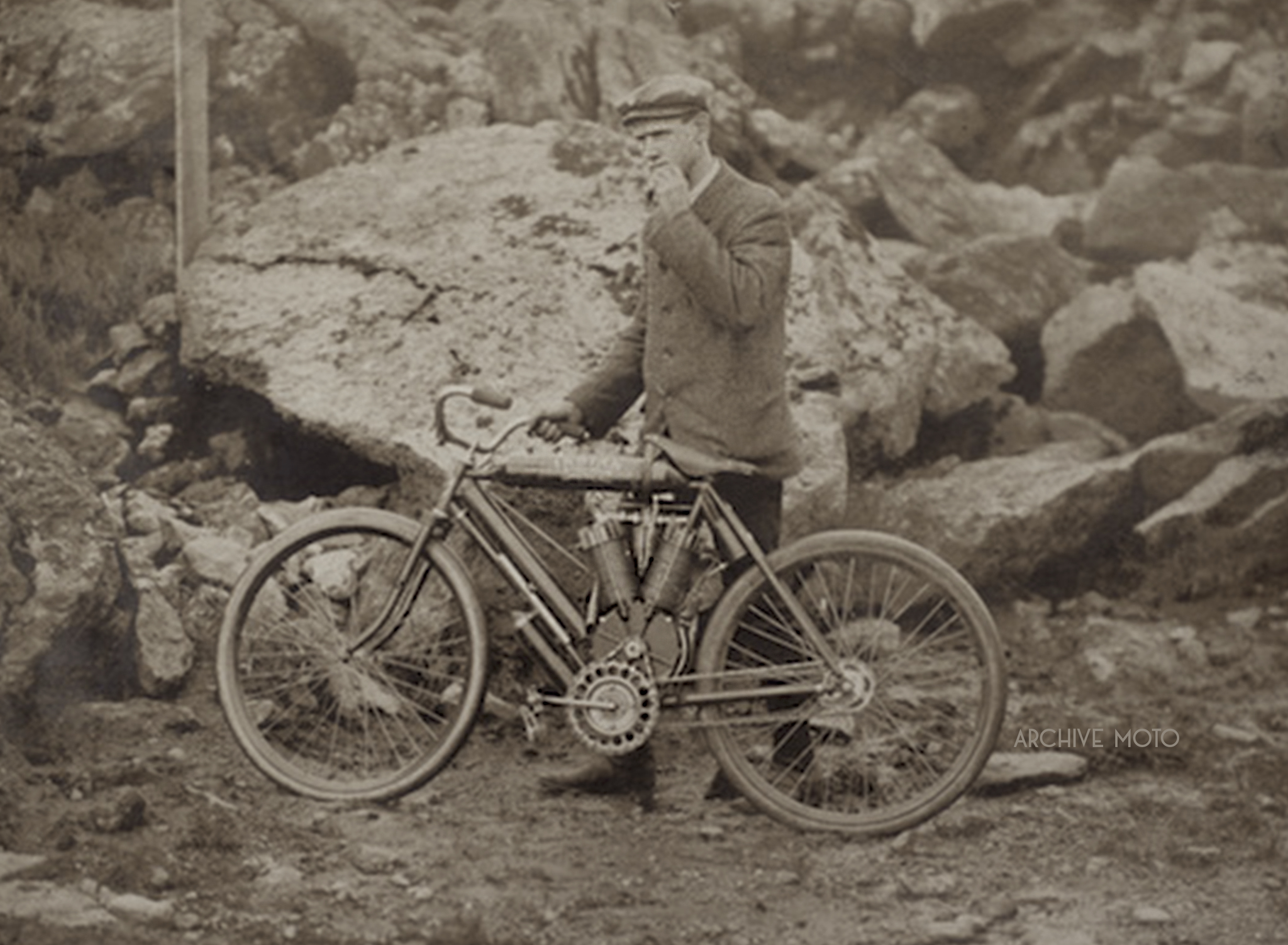On the first of February, 1904 former cycling star turned upstart motorcycle entrepreneur Oscar Hedstrom boarded a train in Ormond Beach, FL, bound for the comfort his workshop in Springfield, MA, discouraged yet undeterred. Despite clocking a respectable top speed of just over 56 mph during the 2nd annual Carnival of Speed, Hedstrom’s latest experiment, a dual-engined, DeDion powered prototype motorcycle suffered a debilitating mechanical failure. Hedstrom was forced to return home empty handed having being beaten out by fellow pioneer Glenn Curtiss and his more refined v-twin design. Within only five months from returning home from Florida Hedstrom had conceived, drafted, cast, and machined his own proprietary v-twin power plant and was eager to unveil his new creation, the very first Indian v-twin.
Mounted in a standard production frame, his first 42 degree v-twin produced 3 1/2 horsepower and was introduced as more of a prototype racing machine than a production model. In-house electrics, twist grip throttle, a new streamlined torpedo style tank along the top frame tube, a rigid fork, chain drive, coaster brake, and toe clips rounded out the configuration. On July 30, 1904 Oscar Hedstrom unveiled his new creation, tearing up the rough sand 1.125 mile course at Sachuest Beach in Newport, RI. Hitting a top speed of 46 mph onboard his new elegant Indian v-twin, Hedstrom won the event and took home a $75 silver bowl trophy. He continued his work on the design and performance, running the new 26ci twin again at least twice in competitions throughout New England as well as constructing a second sister v-twin prototype machine.
With the new year approaching, Hedstrom again packed up and headed south for the 1905 Carnival of Speed at Ormond Beach. Despite being the only motorcycle entrant he threw a leg over the new “heavy” Indian twin determined to overtake previous records set by himself and Glenn Curtiss. The combination of poor weather, rough surface conditions on the beach, and a slightly underpowered machine the new twin prototype couldn’t seem to break the minute mile mark, falling short of existing records, and hitting only a shade over 55 mph. Hedstrom’s machine proved itself quite capable and resilient however, its features were streamlined, refined, and classic, setting a new high standard within an industry that was trailing far behind. It is worth mention that by this time Indian production had reached 1,000 machines and Hedstrom had produced a number of racing specific prototypes with which he had earned several records, Harley-Davidson had made less than 10 machines total and the American motorcycle manufacturing boom had not yet begun. It would be a few years before the innovations Hedstrom developed with his v-twin prototype would make it into production models, but he continued to enter it into competitions and with each win a new marketing strategy took hold in Indian’s business model, victory equals sales.
This image of Hedstrom with one of his two 1904 streamlined v-twin prototypes comes from the “Climb to the Clouds” hillclimb at Mt. Washington, NH, July 18, 1905. Both Hedstrom and his close friend Stanley Kellogg made the rough and rocky 8 mile ascent which featured grades over 20% in sections. Kellogg initially shattered the standing time by 8 minutes on a standard production Indian single before W. Hilliard in a 60hp automobile reclaimed the record by dropping another 5 minutes. Due to the weight of the prototype v-twin it was only allowed to run in an unrestricted class, a frequent issue at the time. Despite a spill Hedstrom came within a minute of beating the big auto, which boasted over 20 times more horsepower than his hardy little Indian twin, and Kellogg fell short by only 4/5 of a second. This remarkable moment, this man and this machine embody every aspect of American motorcycle culture all at once. The industry, the innovation, the drive, the competition, the enthusiasm, the grit, the engineering, the determination, and the spirit of gasoline fueled freedom.

